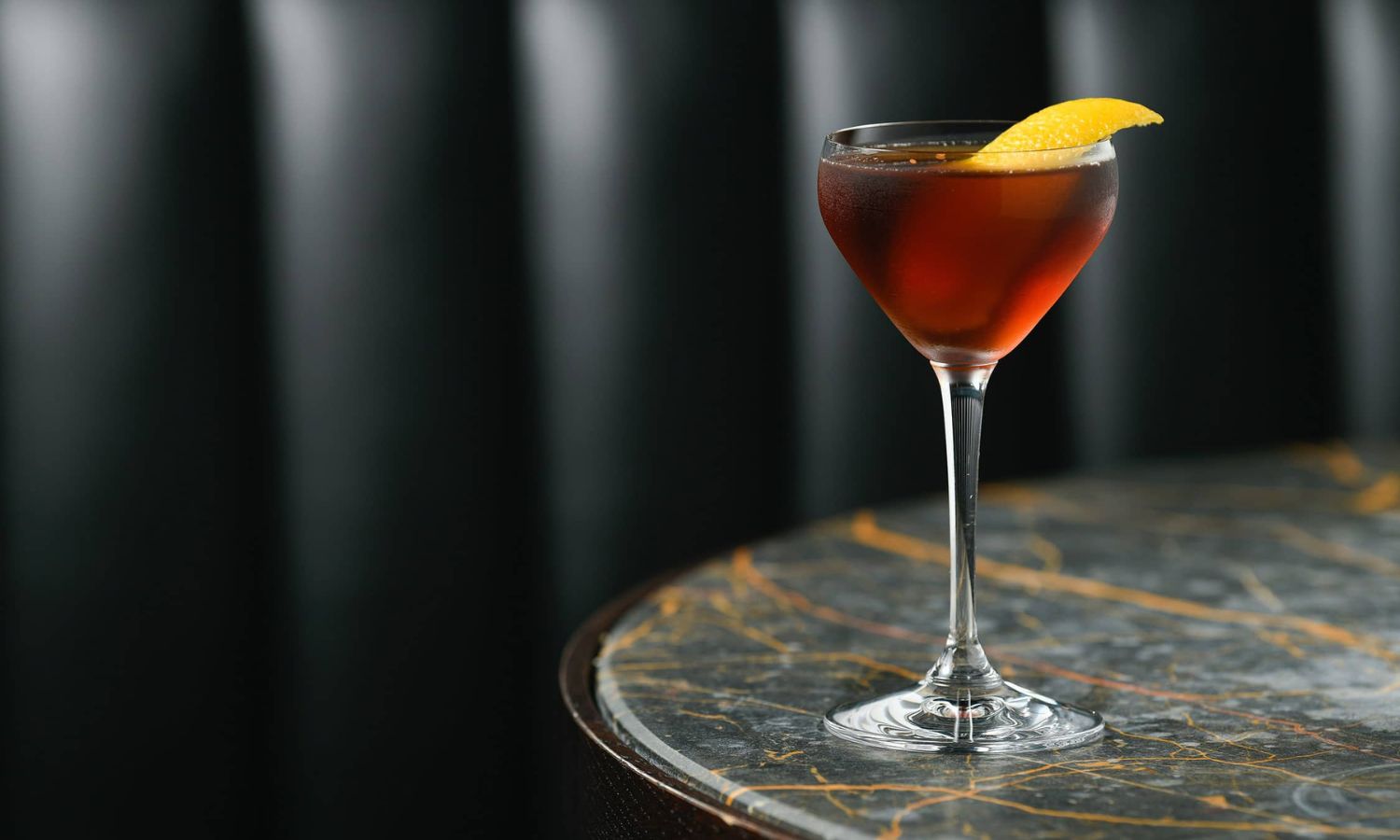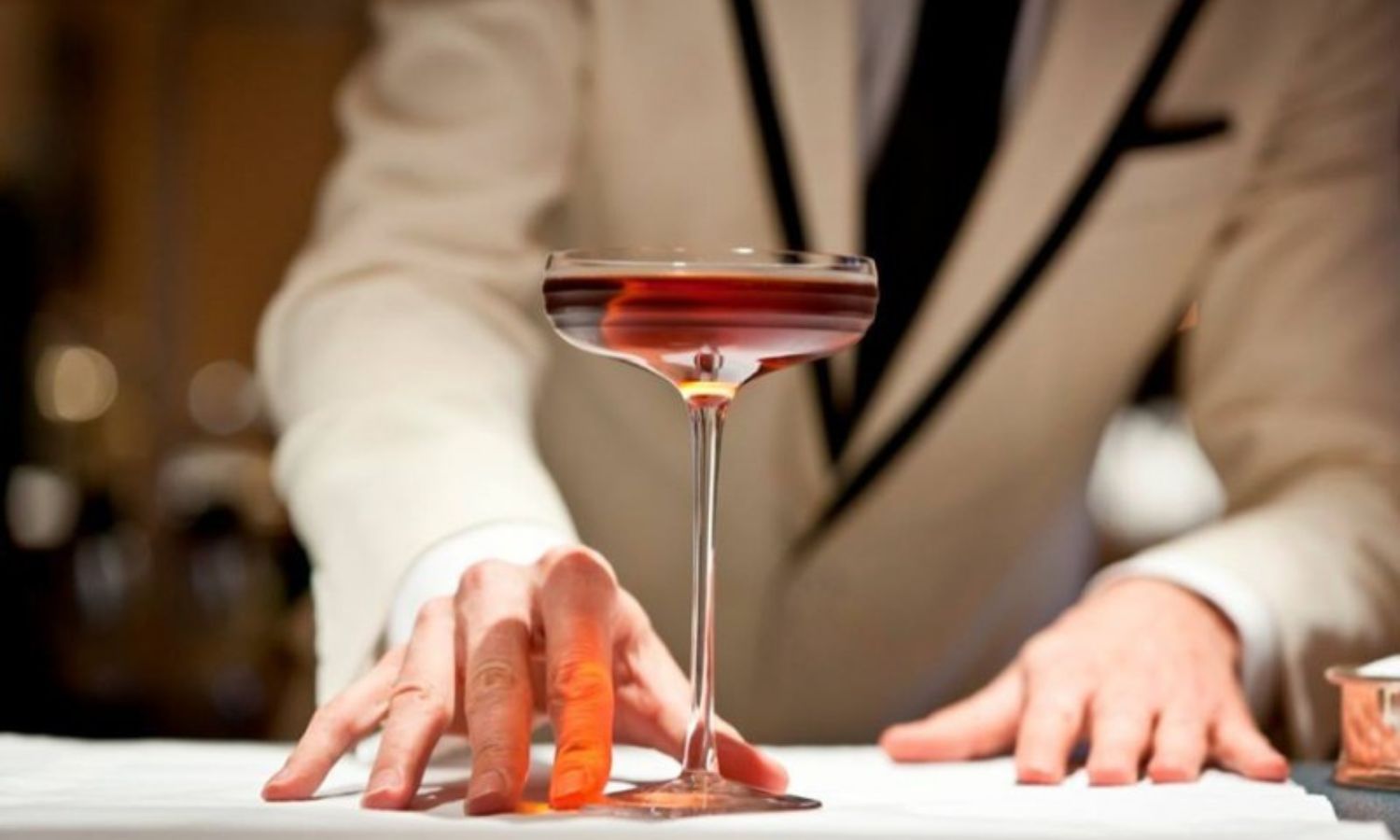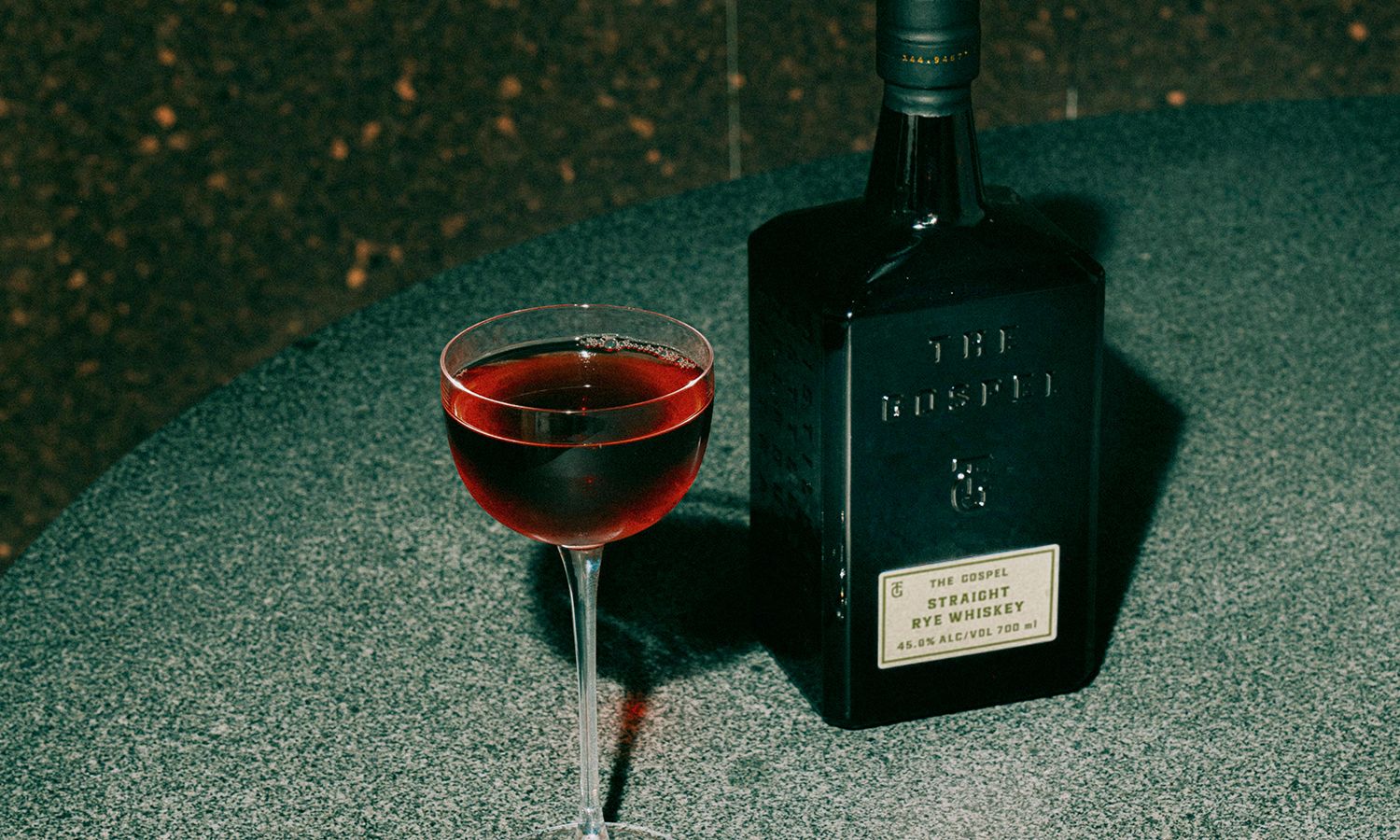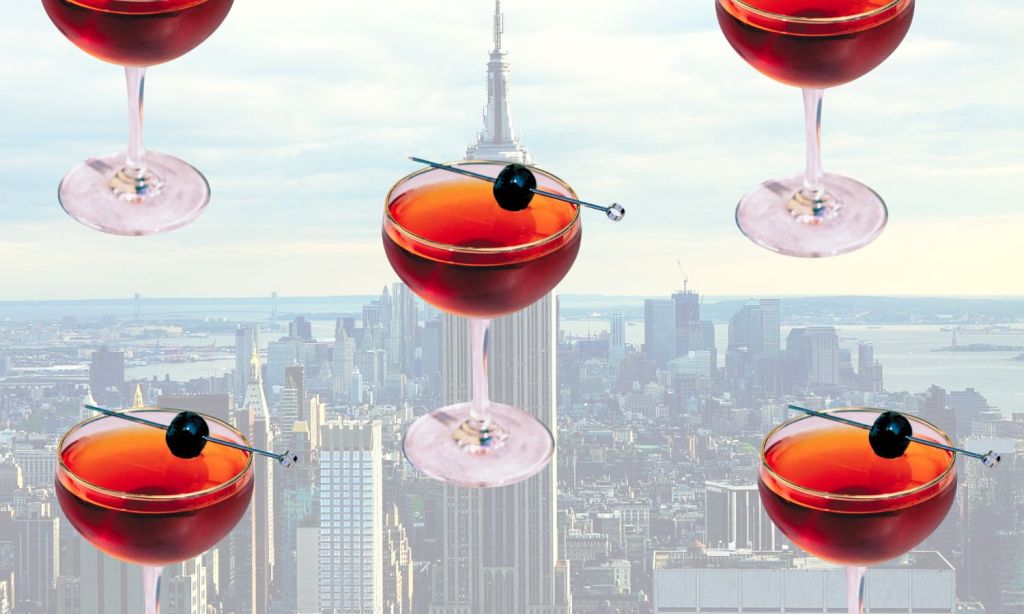Today, you’d be hard-pressed to see a bar menu without a lineup of signature drinks showing off new tricks, in-house infusions, and whatever else bartenders are experimenting with. It can feel like flipping through a fantasy novel, with thumb-sized illustrations of the cocktail and a 50-word back story under each cocktail. It’s both thrilling and avant-garde.
However, where are the classics? The Cosmopolitan, the Old Fashioned, the Manhattan? Is the genteel act of sidling up to a bar and hollering out your favourite timeless concoction now a thing of the past?
I remember ordering my first cocktail in a bar. My original plan was to stroll up to a bartender and order a Cosmo, hoping to channel my inner Carrie Bradshaw cool. I succumbed to a last-minute panic and blurted out “Manhattan” after catching someone else bellowing it from the opposite end of the bar. Seemed fitting — I was, after all, in Manhattan. The first sip was boozy, followed by a hint of bitterness and herbal tingle that coated my mouth.
Since then, I’ve tried Manhattans from everywhere, some made with bourbon for a slightly sweeter taste, others with rye whiskey for a spicier mouthfeel. There are more variations of the Manhattan than I can count, but during the 1800s, there was only one, and no other cocktail captures New York’s 19th-century transformation and the birth of cocktail culture more than a Manhattan.

A New York In the Making
Through the 19th century, the island of Manhattan was rapidly becoming one of the most significant and influential places on the earth. The completion of the Erie Canal in 1825 marked a shift in power between New York City and New Orleans and defined how goods moved throughout America. After the influx of European immigrants in the years that followed, the city became host to a melting pot of cultures.
“Italian immigration had a particularly noteworthy impact on the city’s development,” explains Bodie Howell, events and brand activations coordinator at The Gospel Whiskey. “The introduction of Vermouth, brought by Italian immigrants, played a crucial role in shaping the city’s cultural and historical landscape of cocktails.”
With the rise in population and increased wealth, New York saw the arrival of fancy hotels, cool social clubs, and lively concert saloons. These spots weren’t just about drinks; they showcased a growing hospitality scene and a fresh, creative approach to mixing drinks.
According to Howell, in 1862, Jerry Thomas wrote the first bartenders’ guide, How to Mix Drinks, or the Bon Vivant’s Companion, which opened the profession to the masses, leading to the rise of celebrity bartenders. The bars and saloons of New York City were at the forefront of this new golden age of bartending.
“The Manhattan might seem like a relatively obvious combination to modern drinkers: the blend of rye whiskey, sweet vermouth, and bitters, but at the time, it changed the concept of what a cocktail could be,” he says.
Historically, a cocktail was defined as just bitters, sugar, spirit, and water, resembling what an Old Fashioned looks like today. The substitution of sugar for the sweetness found in vermouth is, arguably, the most significant advancement in cocktail creation since the introduction of accessible ice.
“Because of this, the Manhattan is widely considered as the first ‘modern cocktail’,” explains Howell.
“It’s hard to say that any single drink is the most influential cocktail of all time, but just as hard to argue that any cocktail has shaped the advancement of cocktail creation more than the Manhattan.”

Cocktail Culture Is Born
The first written recipe for a Manhattan can be found in The Modern Bartender’s Guide by O.H. Byron, published in 1884. The success of pairing vermouth and whiskey inspired the creation of the Martinez, a cocktail mixing gin with sweet vermouth, explains Howell. In turn, this led to the creation of a drink mixing gin with dry vermouth, the most ubiquitous cocktail in the world, the Martini.
In 2003, the Red Hook, a hybrid between a Manhattan and a Brooklyn, was created by bartender Vincenzo Errico at Milk & Honey in New York. Then, in 2006, also at Milk & Honey, Michael McIlroy created the Greenpoint and Chad Solomon created the Bensonhurst.
“It became a sort of bartender’s challenge to modify a Manhattan or a Manhattan riff and name it after a neighbourhood in New York,” Howell says.
As new rye whiskeys, obscure vermouths, and Amari entered the market, a range of new approaches to the template emerged, resulting in modern classics like the Black Manhattan and the Carroll Gardens.
According to Howell, the craze of Manhattan riffs died down after 2010, and though the drink and its spin-offs may not be as popular today, they have not been forgotten.
“It might not be as trendy as an ice-cold dirty martini or a spicy marg, and it may not have gone viral like the Negroni Sbagliato with prosecco in it, but the Manhattan still has a cult following of stirred down, booze-forward, dark spirit cocktail drinkers,” he notes.
The Gospel’s (Australia’s only dedicated rye distillery) signature service is a Manhattan, explains Howell. Rye whiskey was the most popular spirit in America from the late 1700s until Prohibition in the early 1900s. It found a home in many cocktails that we now call classics from the first golden age of bartending. If you read any cocktail guidebook published before prohibition, when a recipe calls for “American Whiskey”, it is generally calling for rye, Howell explains.
Rye whiskey struggled after Prohibition and, for a long period, was almost lost. Most small rye producers shut down, and larger distilleries that still made rye spent a single day distilling their entire year’s supply. As with rye, cocktail culture also went through a dark period through the late 1900s, with the 1960s-1990s often being described as “The Dark Age” of cocktails.
Over the last 20 years, a focus on returning to classic cocktails of the past has resulted in a new cocktail renaissance and, with it, a new demand for rye, says Howell. In the early 2000s, bartenders weren’t just looking to find forgotten drinks of the past but were substituting new ingredients into classic drinks to create modern classics.
The Manhattan, and a drink inspired by it, the Brooklyn, were two drinks that received several new iterations and brought rye back to the front of the minds of bartenders and drinks alike.
“Though a Manhattan can be made with bourbon, at its heart, it is a rye cocktail,” he states.

Is the Manhattan Disappearing from Menus?
When was the last time you saw a Manhattan on a cocktail menu? It’s been a while, but does that mean we’re over them? Well, according to Howell, no.
“It’s hard to keep track of all the drink trends and innovations coming and going,” he says.
Some fundamental things seem to have stayed consistent throughout this age of modern cocktails — a focus on quality, fresh and seasonal ingredients, the shift to supporting quality local producers, and the level of thought and care put into each element of a drink.
However, Howell believes we might have reached a point where new drinks are more inspired by a one-year-old modern classic than a 150-year-old drink.
“The heritage of drinks like the Manhattan lives on in the many riffs of the riffs it inspires,” Howell declares, “Also, one of the joys of a classic cocktail like a Manhattan is that it doesn’t necessarily need to be on the menu for you to order it. “Just your bartender for their favourite Manhattan-inspired drink.”
At Sydney bar Maybe Sammy, which has just been crowned the most influential bar in the world by the Top 500 Bars at a ceremony held in Paris, its co-founder Stefano Catino believes that while the other classic cocktails like a negroni, margarita, or espresso martini get more limelight, there’s always a place for a Manhattan in a bar.
As Catino explains, “The Manhattan is more of a winter drink, which is probably why we haven’t noticed it on menus as much, but it’s definitely not going anywhere.”
For bartenders, it’s an easy cocktail to make. “It’s also very personable,” says Catino. “You can alter the recipe to adapt to the guest and the vermouth ratio they prefer. You have the sweet version, which is made with sweet vermouth; the dry version, made with dry vermouth; and the perfect version, which has equal ratios of both vermouths.”
For Howell, he’s predicting a renaissance. There are certain classic concepts that, when paired with new ingredients, can transform the original into something new, he says.
“With the new wave of new, interesting rye whiskey being made all across the world, I’d be surprised if the Manhattan didn’t have another moment.”
Earlier this year, Howell recalls having a Manhattan at Apollo Inn.
“It was made with our collaborative High Wheat project release whiskey, and it was not only the best Manhattan I’ve ever had,” Howell recalls, “but also possibly the best drink I’ve been served in a bar all year.”
“If a Manhattan comeback means more drinks like that, then I am very keen for it.”
Related: The Next Big Drink Trend Comes In Teeny Tiny Martini Glasses
Related: The Unexpected Coolness of Tinned Fish
Read more stories from The Latch and subscribe to our email newsletter.







